Advanced Multichannel Lighting Control Systems in Heritage Environments: Case Study of the Cathedral of Seville
Abstract
Featured Application
Abstract
1. Introduction and Objectives
1.1. Background
1.2. Aim and Objectives
2. Materials and Methods
2.1. Multichannel Luminaire System Description
- The simulated color rendering, defined by TM-30-20 procedure [15], must be higher than 90. The proposed SPD achieves a Fidelity Index (Rf) of 90 and a Gamut Index (Rg) of 95, providing excellent performance in color fidelity and discrimination.
- The entire visible spectrum must be covered by the SPD emission of the luminaire to provide similar chromaticity to most hues in the visible range.
- The visible photodegradation must be lower than the case of cool LED lamps, according to the CIE 157:2004 procedure [31]. Figure 4 shows the results of the visible damage of the proposed multichannel luminaire and the critical exposure duration in hours before perceptible visual damage occurs, considering an average illuminance of 100 lx from 8:00 am to 8:00 pm with a protective glass.
2.2. Case Studies
2.3. Subjective and Objective Trials
- What is your level of satisfaction with the color rendering?(very unsatisfied/unsatisfied/neutral/satisfied/very satisfied)
- What is your level of satisfaction with the perception of colors?(very unsatisfied/unsatisfied/neutral/satisfied/very satisfied)
- How do you perceive the hue of the lighting in the space?(very cool/cool/neutral/warm/very warm)
- The Farnsworth-Munsell 100 Hue test employs 100 color caps with similar hues in four color ranges with low chromaticity (red to yellow, yellow to green, green to blue, and blue to red), as shown in Figure 9A. Participants must arrange the color caps according to their hue similarity, considering that color references are fixed at both ends of each range. Both the hue caps and light sources were randomly selected for each test and participant. This trial provides an objective measure of a light source’s ability to distinguish similar colors. The test score is determined by the number of color cap transpositions; specifically, a light source causing one transposition in the Farnsworth-Munsell trial would receive an error score of 4, two transpositions correspond to an error score of 8, three transpositions to a score of 12, and so on [29].
- The Natural Color System test utilizes a collection of color samples with varying parameters of chromaticity and brightness, identified in polar coordinates. The hues vary according to the angle, similar to the ranges in the previous test (yellow to red, red to blue, blue to green, and green to yellow), as shown in Figure 9B. Participants must identify the position of the color samples in the polar coordinates. An angular variation indicates a change in hue perception, while a variation in the parallels indicates a change in chromaticity. This test determines the observer’s divergence in perceived color from the real one under an illuminated scenario with a particular spectral distribution, and thus assesses the color fidelity allowed by a specific light source.
3. Results
3.1. Color Discrimination Test
3.2. Color Fidelity Test
3.3. Color Preference Test
4. Discussion
5. Conclusions
Author Contributions
Funding
Institutional Review Board Statement
Informed Consent Statement
Data Availability Statement
Acknowledgments
Conflicts of Interest
References
- Acosta, I.; Campano, M.A.; Dominguez-Amarillo, S.; Muñoz, C. Dynamic daylight metrics for electricity savings in offices: Window size and climate smart lighting management. Energies 2018, 11, 3143. [Google Scholar] [CrossRef]
- Lin, Y.; Wei, M. Colour preference varies with lighting application. Light. Res. Technol. 2017, 49, 316–328. [Google Scholar] [CrossRef]
- Acosta, I.; Campano, M.A.; Domínguez, S.; Fernández-Agüera, J. Minimum Daylight Autonomy: A New Concept to Link Daylight Dynamic Metrics with Daylight Factors. LEUKOS J. Illum. Eng. Soc. N. Am. 2019, 15, 251–269. [Google Scholar] [CrossRef]
- Bellia, L.; Acosta, I.; Angel, M.; Campano, M.A.; Fragliasso, F. Impact of daylight saving time on lighting energy consumption and on the biological clock for occupants in office buildings. Sol. Energy 2020, 211, 1347–1364. [Google Scholar] [CrossRef]
- Acosta, I.; Leslie, R.P.; Figueiro, M.G. Analysis of circadian stimulus allowed by daylighting in hospital rooms. Light. Res. Technol. 2017, 49, 49–61. [Google Scholar] [CrossRef]
- Bellia, L.; Fragliasso, F.; Pedace, A.; Spada, G.; Pedace, A. Methods to evaluate lighting quality in educational environments. Energy Procedia 2015, 78, 2645–2650. [Google Scholar] [CrossRef]
- Natanian, J.; Aleksandrowicz, O.; Auer, T. A parametric approach to optimizing urban form, energy balance and environmental quality: The case of Mediterranean districts. Appl. Energy 2019, 254, 113637. [Google Scholar] [CrossRef]
- Acosta, I.; Campano, M.Á.; Leslie, R.; Radetsky, L. Daylighting design for healthy environments: Analysis of educational spaces for optimal circadian stimulus. Sol. Energy 2019, 193, 584–596. [Google Scholar] [CrossRef]
- David, A.; Sahlhoff, D.; Wisser, M. Human perception of light chromaticity: Short-wavelength effects in spectra with low circadian stimulation, and broader implications for general LED sources. Opt. Express 2019, 27, 31553–31566. [Google Scholar] [CrossRef]
- Tazehmahaleh, K.A.; Smet, K.; Hanselaer, P. Visualization of Lighting Quality and Object Appearance When Using Multichannel Light Sources. LEUKOS J. Illum. Eng. Soc. N. Am. 2021, 18, 232–245. [Google Scholar] [CrossRef]
- Hurlbert, A.; Cuttle, C. New Museum Lighting for People and Paintings. LEUKOS J. Illum. Eng. Soc. N. Am. 2019, 16, 1–5. [Google Scholar] [CrossRef]
- Feltrin, F.; Leccese, F.; Hanselaer, P.; Smet, K.A.G. Impact of Illumination Correlated Color Temperature, Background Lightness, and Painting Color Content on Color Appearance and Appreciation of Paintings. LEUKOS J. Illum. Eng. Soc. N. Am. 2019, 16, 25–44. [Google Scholar] [CrossRef]
- Lassandro, P.; Fioriello, C.S.; Lepore, M.; Zonno, M. Analysing, modelling and promoting tangible and intangible values of building heritage with historic flame lighting system. J. Cult. Herit. 2021, 47, 166–179. [Google Scholar] [CrossRef]
- Sándor, N.; Schanda, J. Visual colour rendering based on colour difference evaluations. Light. Res. Technol. 2006, 38, 225–239. [Google Scholar] [CrossRef]
- Illuminating Engineering Society. IES Method for Evaluating Light Source Color Rendition; IES Technical Memorandum (TM) 30-20; IESNA: New York, NY, USA, 2020. [Google Scholar]
- Royer, M.P. IES TM-30-15 Is Approved—Now What? LEUKOS 2016, 12, 3–5. [Google Scholar] [CrossRef][Green Version]
- Acosta, I.; León, J.; Bustamante, P. Daylight spectrum index: A new metric to assess the affinity of light sources with daylighting. Energies 2018, 11, 2545. [Google Scholar] [CrossRef]
- Royer, M.P.; Wei, M. The Role of Presented Objects in Deriving Color Preference Criteria from Psychophysical Studies. LEUKOS J. Illum. Eng. Soc. N. Am. 2017, 13, 143–157. [Google Scholar] [CrossRef]
- Schanda, J.; Csuti, P.; Szabó, F. Colour fidelity for picture gallery illumination, Part 1: Determining the optimum light-emitting diode spectrum. Light. Res. Technol. 2015, 47, 513–521. [Google Scholar] [CrossRef]
- Bellia, L.; Fragliasso, F.; Stefanizzi, E. Effects of light source spectrum and background colour on the perception of paintings. Light. Res. Technol. 2020, 52, 36–63. [Google Scholar] [CrossRef]
- Zhai, Q.Y.; Luo, M.R.; Liu, X.Y. The impact of LED lighting parameters on viewing fine art paintings. Light. Res. Technol. 2016, 48, 711–725. [Google Scholar] [CrossRef]
- Szabó, F.; Kéri, R.; Schanda, J.; Csuti, P.; Wilm, A.; Baur, E. A study of preferred colour rendering of light sources: Shop lighting. Light. Res. Technol. 2016, 48, 286–306. [Google Scholar] [CrossRef]
- Royer, M.P.; Wei, M. Wilkerson, and S. Safranek. Experimental validation of colour rendition specification criteria based on ANSI/IES TM-30-18. Light. Res. Technol. 2019, 52, 323–349. [Google Scholar] [CrossRef]
- Houser, K.W.; Wei, M.; David, A.; Krames, M.R. Whiteness perception under LED illumination. LEUKOS J. Illum. Eng. Soc. N. Am. 2014, 10, 165–180. [Google Scholar] [CrossRef]
- Jost-Boissard, S.; Avouac, P.; Fontoynont, M. Assessing the colour quality of LED sources: Naturalness, attractiveness, colourfulness and colour difference. Light. Res. Technol. 2015, 47, 769–794. [Google Scholar] [CrossRef]
- Dangol, R.; Bhusal, P.; Halonen, L. Performance of colour fidelity metrics. Light. Res. Technol. 2015, 47, 897–908. [Google Scholar] [CrossRef]
- Gu, H.T.; Luo, M.R.; Liu, X.Y. Testing different colour rendering metrics using colour difference data. Light. Res. Technol. 2017, 49, 539–560. [Google Scholar] [CrossRef]
- Esposito, T. An Adjusted Error Score Calculation for the Farnsworth-Munsell 100 Hue Test. LEUKOS J. Illum. Eng. Soc. N. Am. 2019, 15, 195–202. [Google Scholar] [CrossRef]
- Esposito, T.; Houser, K. A new measure of colour discrimination for LEDs and other light sources. Light. Res. Technol. 2019, 51, 5–23. [Google Scholar] [CrossRef]
- De Beer, E.; Van Der Burgt, P.; Van Kemenade, J. Another Color Rendering Metric: Do We Really Need It, Can We Live without It? LEUKOS J. Illum. Eng. Soc. N. Am. 2016, 12, 51–59. [Google Scholar] [CrossRef]
- ISO CIE 157:2004; Control of Damage to Museum Objects by Optical Radiation. Commission Internationale de l’Éclairage (CIE): Vienna, Austria, 2004.
- Durmus, D.; Abdalla, D.; Duis, A.; Davis, W. Spectral Optimization to Minimize Light Absorbed by Artwork. LEUKOS J. Illum. Eng. Soc. N. Am. 2018, 16, 45–54. [Google Scholar] [CrossRef]
- Bustamante, P.; Acosta, I.; León, J.; Campano, M.A. Assessment of color discrimination of different light sources. Buildings 2021, 11, 527. [Google Scholar] [CrossRef]
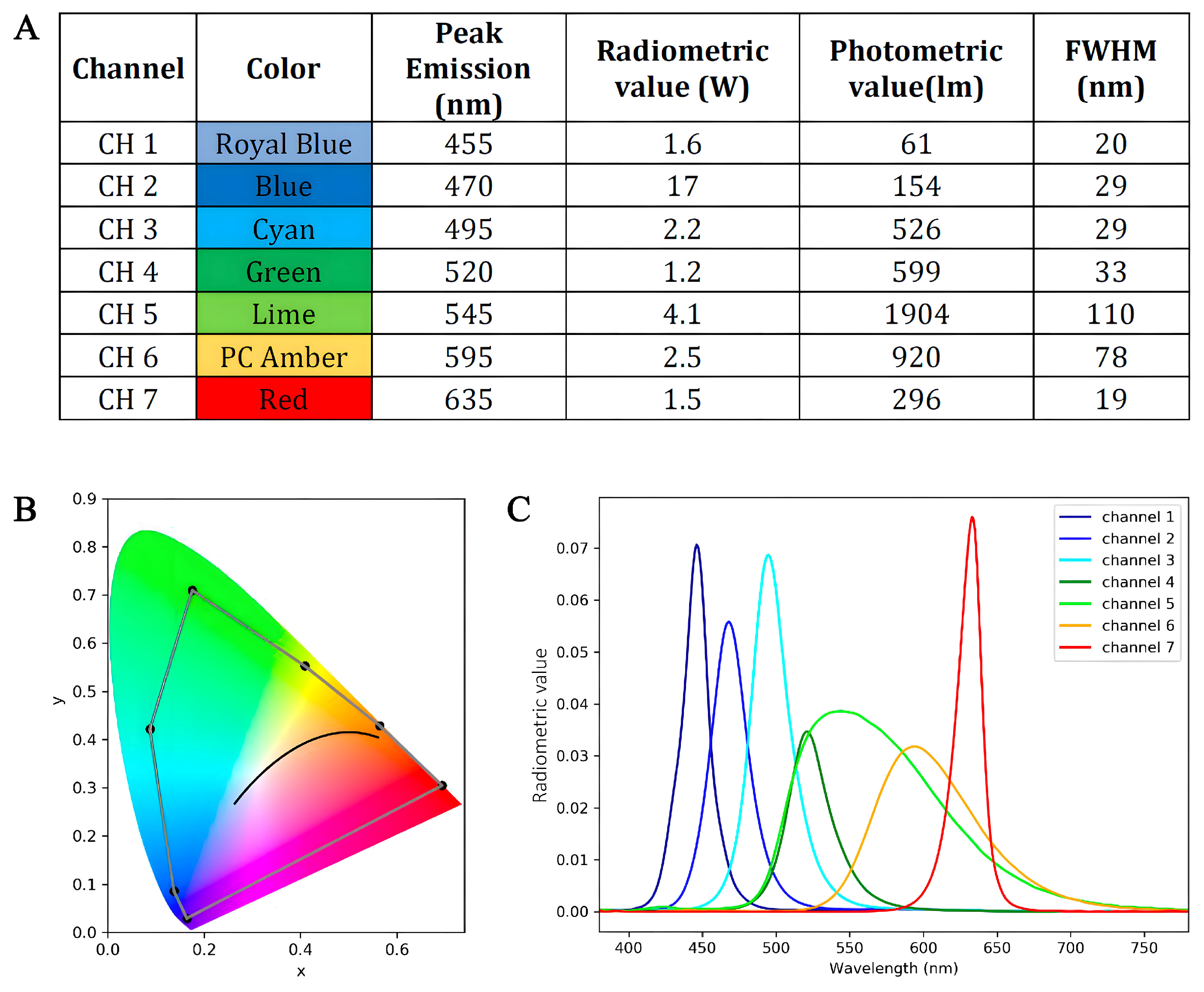

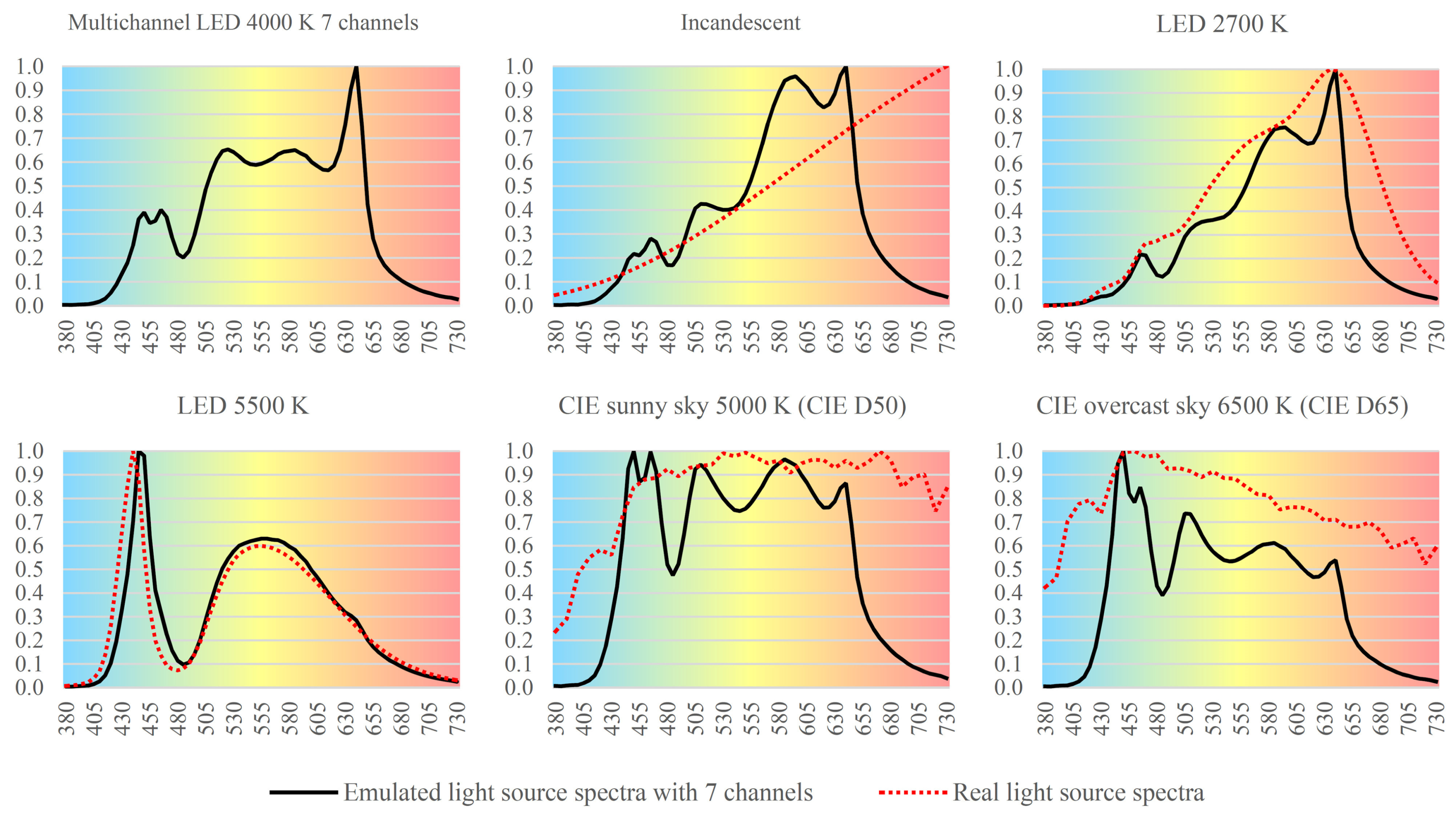
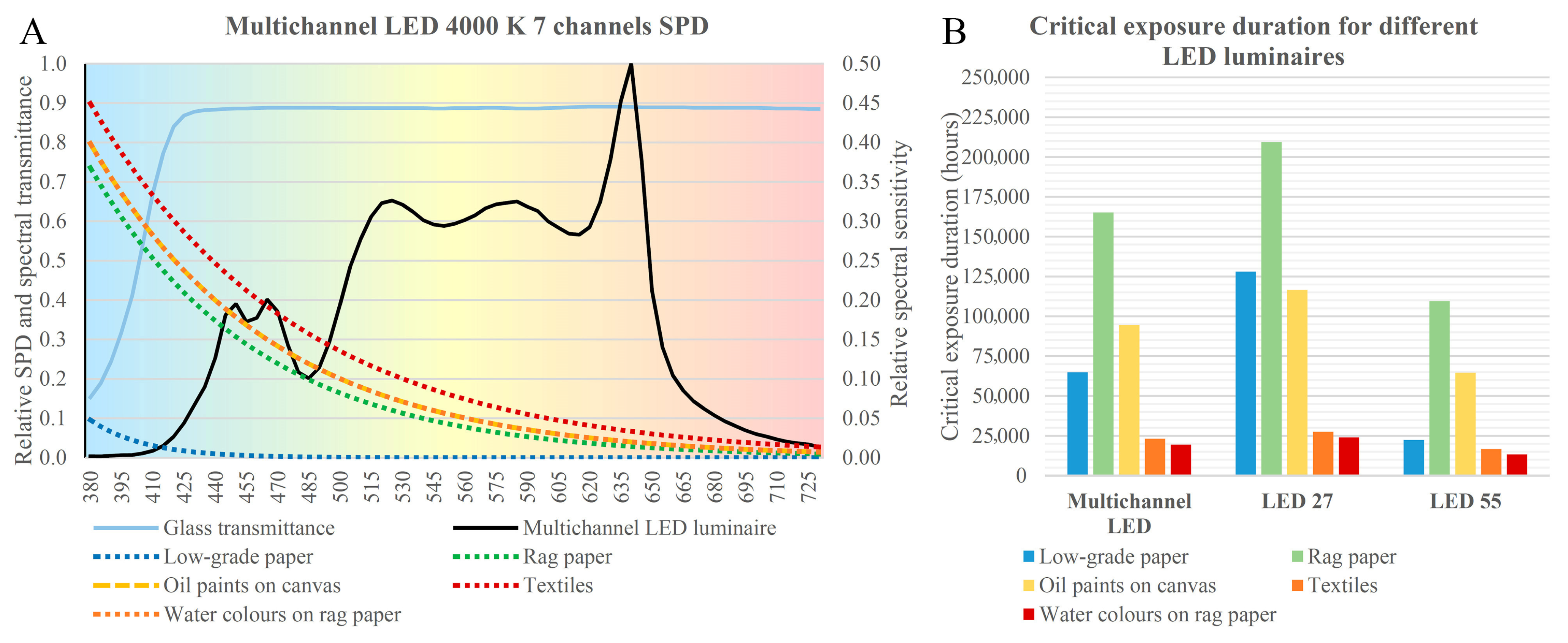
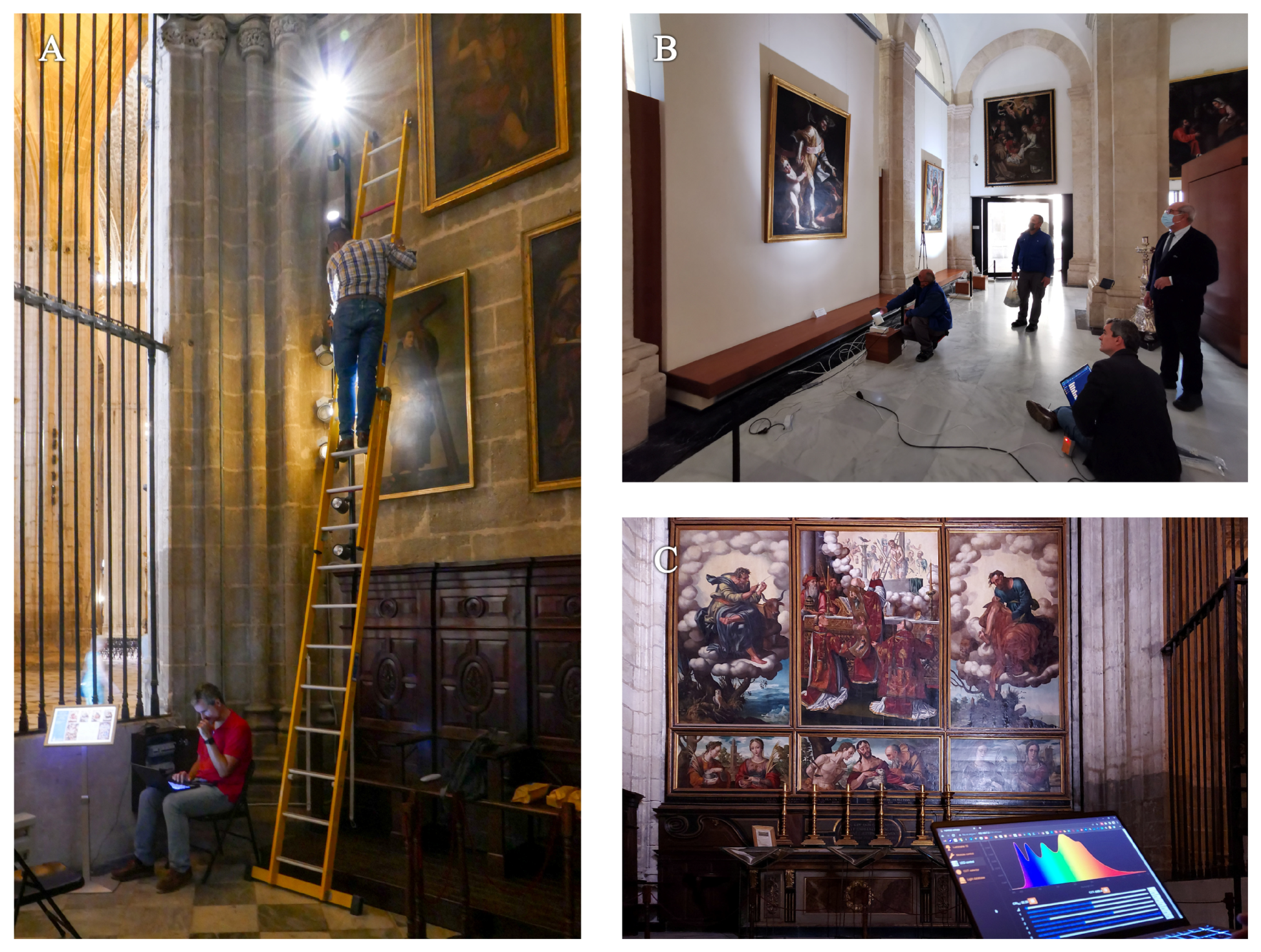
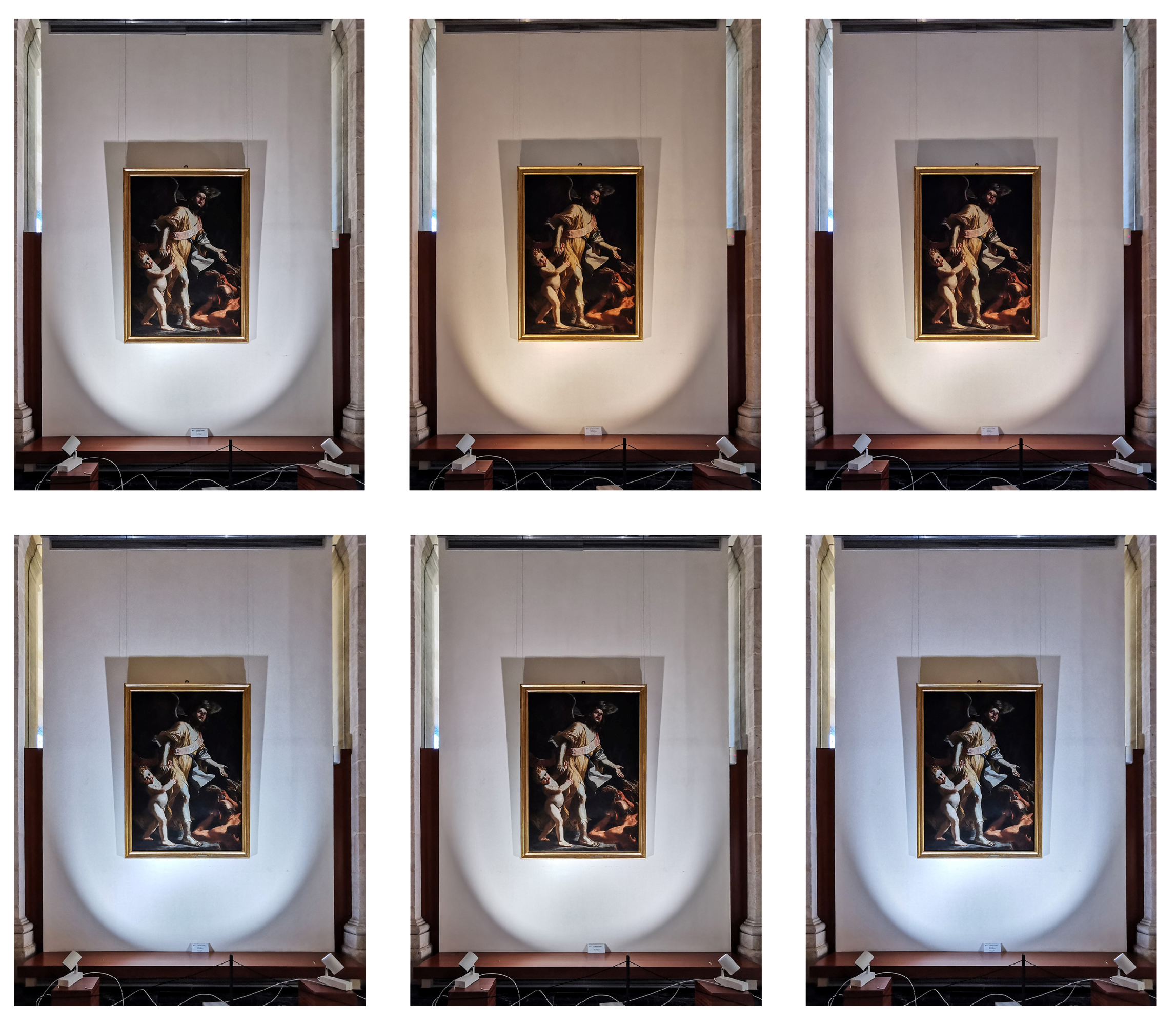
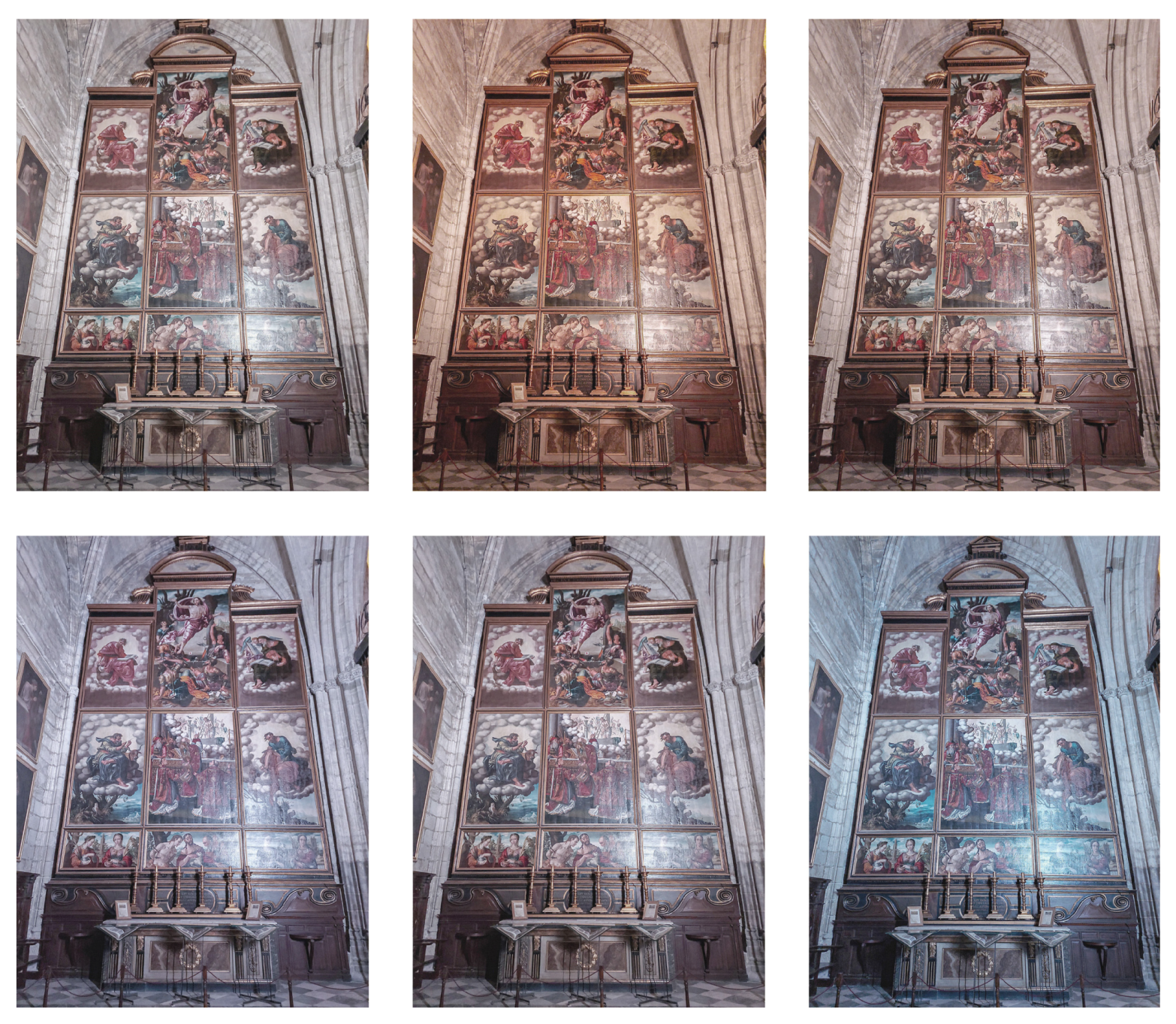
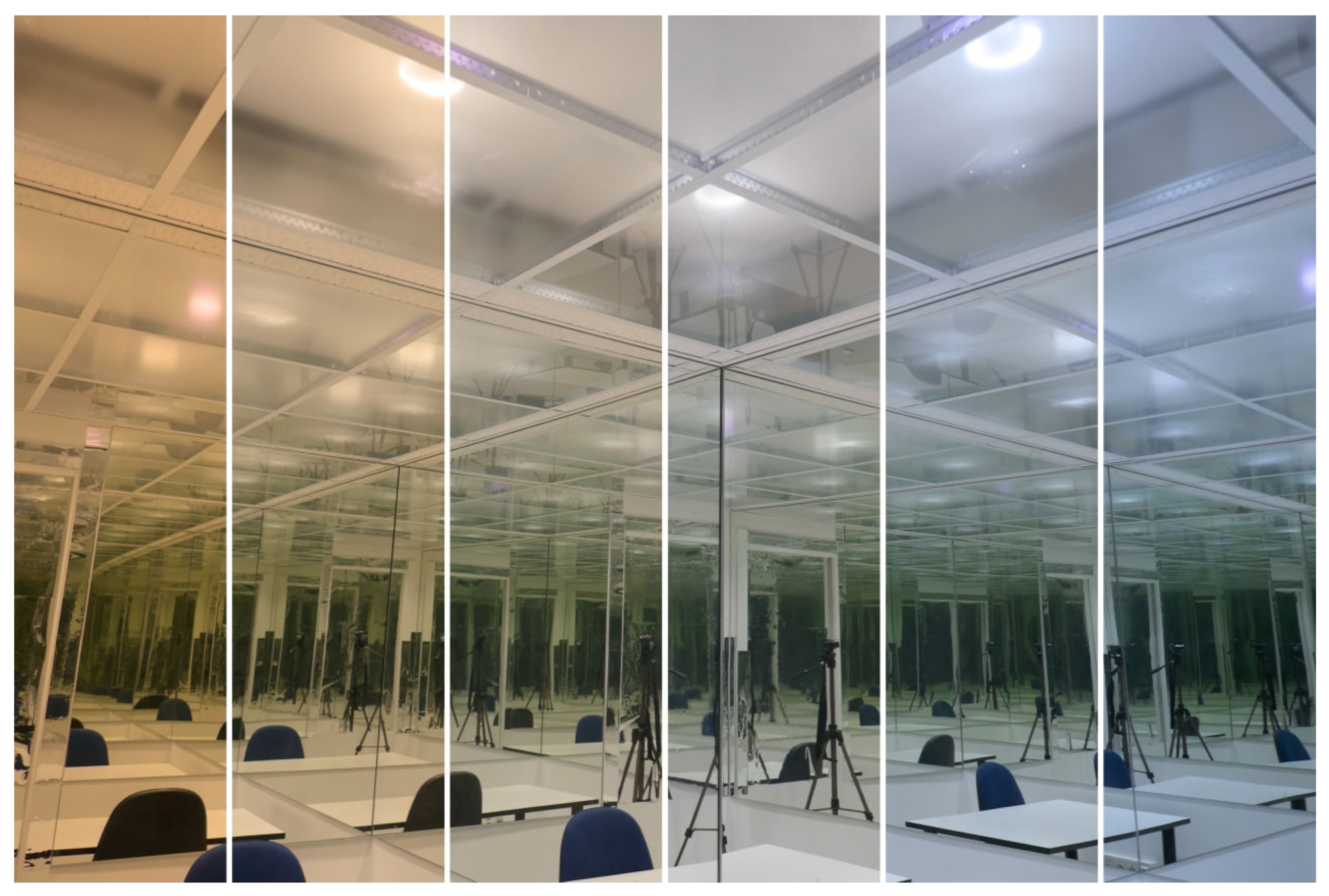
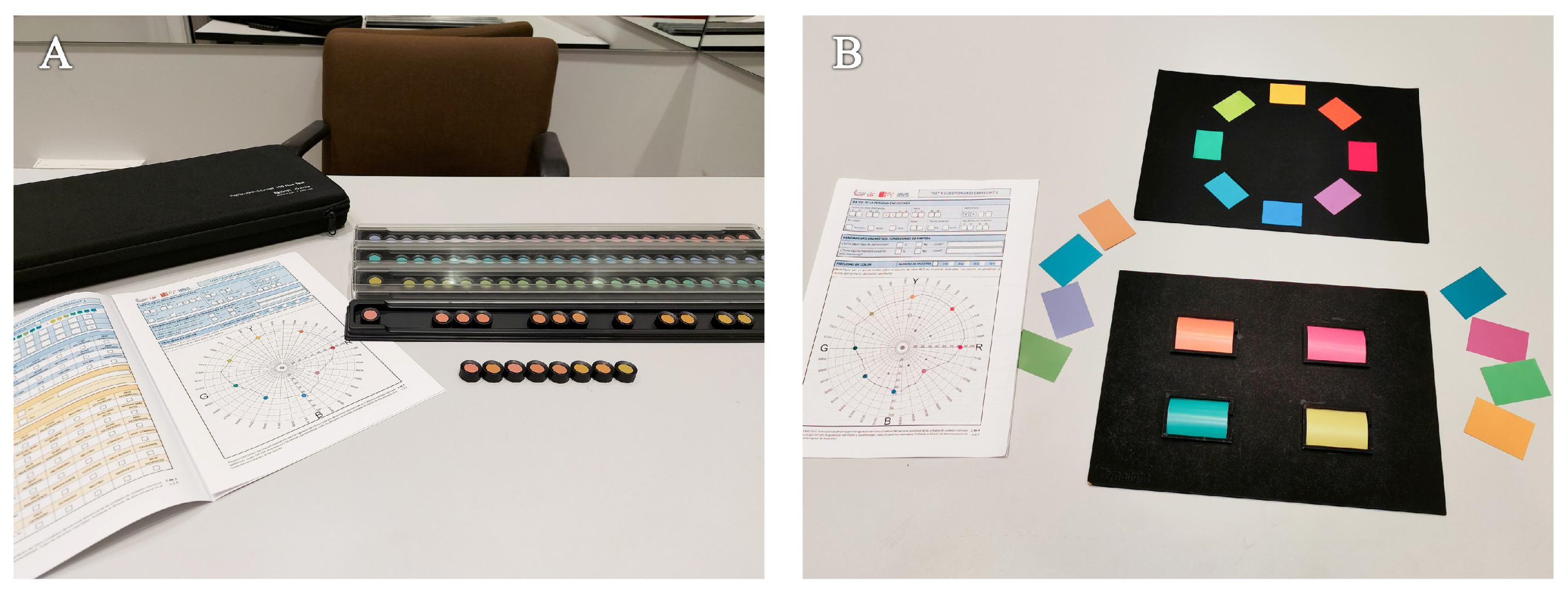
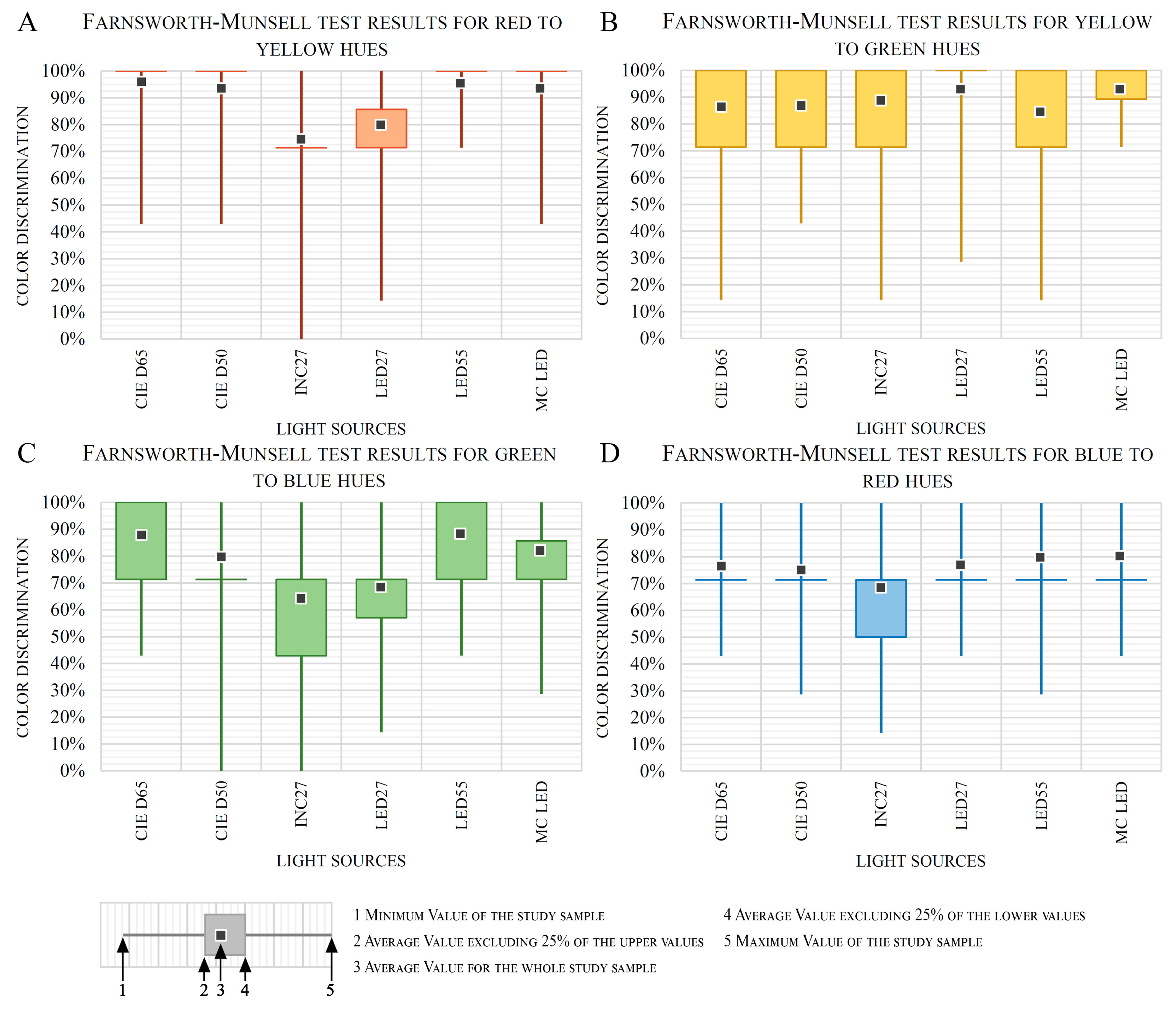
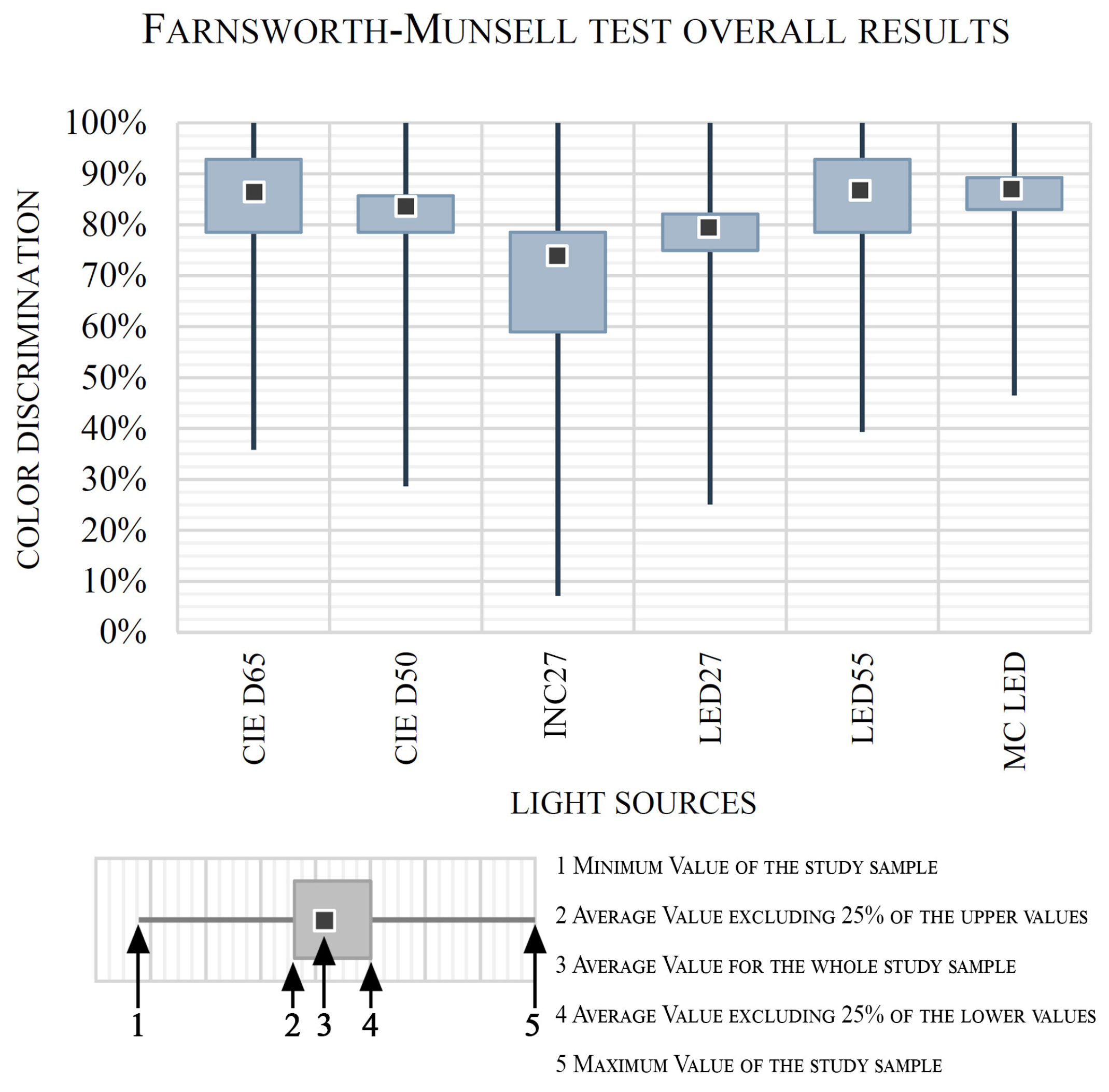
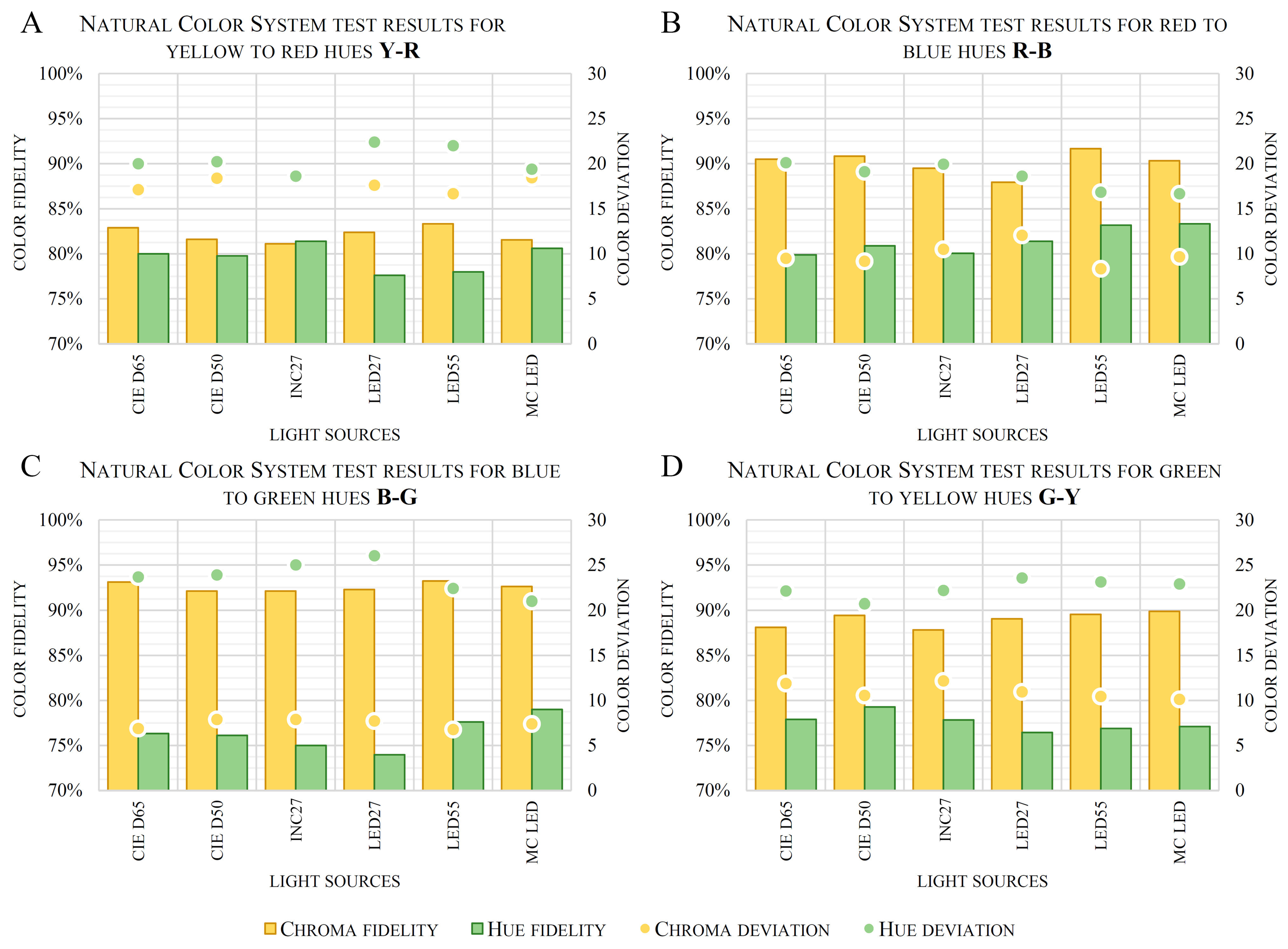

| Score | Single Transposition | Double Transposition |
|---|---|---|
| 100.0% | 0 | 0 |
| 83.3% | 1 | 0 |
| 66.6% | 2 | 1 |
| 50.0% | 3 | 1 (+1) 1 |
| 33.3% | 4 | 2 |
| 16.6% | 5 | 2 (+1) 1 |
Disclaimer/Publisher’s Note: The statements, opinions and data contained in all publications are solely those of the individual author(s) and contributor(s) and not of MDPI and/or the editor(s). MDPI and/or the editor(s) disclaim responsibility for any injury to people or property resulting from any ideas, methods, instructions or products referred to in the content. |
© 2024 by the authors. Licensee MDPI, Basel, Switzerland. This article is an open access article distributed under the terms and conditions of the Creative Commons Attribution (CC BY) license (https://creativecommons.org/licenses/by/4.0/).
Share and Cite
Aguilar, H.; Acosta, I.; Mohamed, S.; Navarro, J. Advanced Multichannel Lighting Control Systems in Heritage Environments: Case Study of the Cathedral of Seville. Appl. Sci. 2024, 14, 8242. https://doi.org/10.3390/app14188242
Aguilar H, Acosta I, Mohamed S, Navarro J. Advanced Multichannel Lighting Control Systems in Heritage Environments: Case Study of the Cathedral of Seville. Applied Sciences. 2024; 14(18):8242. https://doi.org/10.3390/app14188242
Chicago/Turabian StyleAguilar, Honorio, Ignacio Acosta, Sara Mohamed, and Jaime Navarro. 2024. "Advanced Multichannel Lighting Control Systems in Heritage Environments: Case Study of the Cathedral of Seville" Applied Sciences 14, no. 18: 8242. https://doi.org/10.3390/app14188242
APA StyleAguilar, H., Acosta, I., Mohamed, S., & Navarro, J. (2024). Advanced Multichannel Lighting Control Systems in Heritage Environments: Case Study of the Cathedral of Seville. Applied Sciences, 14(18), 8242. https://doi.org/10.3390/app14188242






